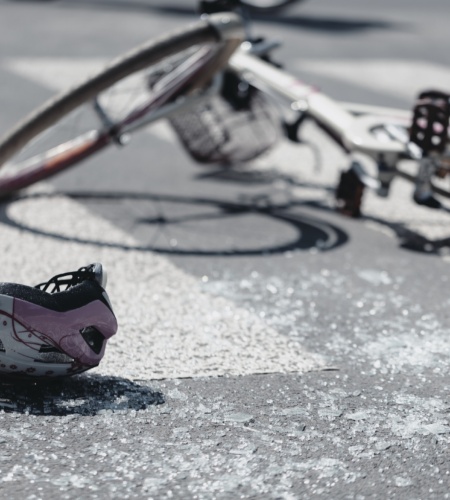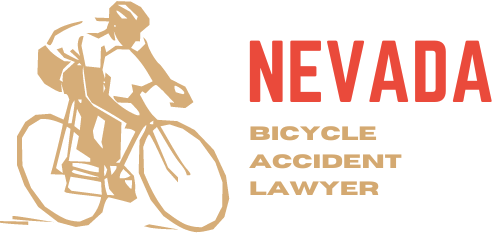Am I Responsible For My Injuries In A Bike Accident Understanding Nevada Cyclist Rules and Personal Injury Claims

If you’re involved in a bicycle accident with a motor vehicle, determining responsibility for your injuries can be complex.
The assessment hinges on the specifics of the accident, including adherence to traffic laws and the conduct of both the driver and yourself as the cyclist.
Even if you hold some responsibility for the incident, partial fault does not necessarily prevent you from recovering damages due to Nevada’s comparative negligence laws.
Nevada cyclists must follow the same traffic laws as motor vehicles when sharing the road, ensuring both safety and legal protection.
This includes signaling turns, obeying traffic signals, and riding in the same direction as traffic.
Knowing and adhering to these regulations is crucial, especially when legal accountability is evaluated in accidents.
Should you find yourself in a bike accident in Nevada, you have a limited window to pursue legal action.
The statute of limitations sets a period within which you must file a personal injury claim; otherwise, you forfeit your right to compensation.
In such situations, considering legal representation from a personal injury lawyer can be vital.
A lawyer can provide guidance through the complexities of your case, from investigating the incident to negotiating with insurance companies and, if necessary, representing your interests in court.
Determining Liability in Bicycle Accidents
In the wake of a bicycle accident involving a motor vehicle, establishing who is at fault is vital for compensation and legal purposes.
Understanding Comparative Fault
When evaluating an accident between a cyclist and a vehicle, Nevada follows the principle of comparative fault.
This means that if you are less than 51% responsible for your injuries:
- Your Compensation: You may still obtain damages.
- Reduction in Damages: Your compensation could be reduced by your percentage of fault.
For instance, if you’re found 20% at fault for not signaling a turn and the driver is 80% at fault for speeding, you could still recover 80% of your damages from the driver or their insurer.
Responsibilities of Motorists and Cyclists
In Nevada, the law requires mutual respect and adherence to traffic regulations among all road users.
As a cyclist, you must:
- Abide by Traffic Laws: Follow the same rules as motor vehicles.
- Use Bicycle Lanes: When available, use them to enhance your safety.
Similarly, motorists must:
- Keep Distance: Maintain a safe distance when passing.
- Check for Bicycles: Be vigilant, especially when turning or opening car doors.
Remember, if a motorist breaches their duty of care by texting or ignoring a red light, they can be held liable for any resulting accident.
However, if you fail to use lights at night or ignore traffic signs, your actions can also contribute to your liability.
Legal Framework for Cyclists in Nevada
In Nevada, as a cyclist, you’re subject to specific laws designed to protect your safety and outline your responsibilities when sharing the road with motor vehicles.
Required Conduct on the Road
- Hand Signals: Indicate your intentions on the road by using standardized hand signals: left turn (hand and arm extended horizontally), right turn (hand and arm extended upward), stop or decrease speed (hand and arm extended downward).
- Reentering Traffic: Before merging back into a traffic lane from a parked position, ensure you follow proper procedures and be aware of surrounding traffic.
Nevada Cycling Rules
- Road Sharing: You must obey the same traffic laws as motorists; this includes stopping at red lights and stop signs, yielding when required, and following speed limits.
- Helmet Use: While not mandatory for all cyclists, helmet use is strongly encouraged to reduce the risk of head injuries.
- Riding Direction: Always ride in the same direction as traffic, using bike lanes where available.
- Visibility: Equip your bicycle with a front light and rear reflectors when riding from sunset to sunrise or whenever visibility is poor.
Adhering to these rules not only helps keep you safe but can also affect your liability in the event of an accident.
Personal Injury Claims in Nevada
When pursuing a personal injury claim in Nevada, understanding the statute of limitations and the process of filing a claim is crucial.
These legal parameters dictate the timeline and steps you must follow to seek compensation for damages sustained in an accident, such as a bicycle-car collision.
Statute of Limitations for Filing a Claim
In Nevada, you have a two-year time frame to file a personal injury claim starting from the date of the accident.
Missing this deadline can result in the loss of your right to seek compensation. It’s important to act promptly to ensure your claim is filed within this period.
Process of Filing a Personal Injury Claim
The process begins with determining liability and the extent of your damages.
In Nevada, even if you are partially responsible for your injuries, you may still recover damages due to the state’s comparative negligence laws. However, your compensation will be reduced by your percentage of fault.
- Gather evidence relating to the accident and your injuries.
- File a claim with the at-fault party’s insurance company.
- Negotiate a settlement or proceed to trial if a fair settlement can’t be reached.
It’s recommended to consult with a personal injury lawyer, especially if your case involves substantial injuries or complex fault issues.
An attorney can navigate the legal system on your behalf and work to secure the compensation you deserve.
Seeking Legal Assistance
Navigating the complexities of legal claims post-bike accident can be challenging. Understanding when to seek legal help and the benefits of having a lawyer can better protect your interests and potential compensation.
When to Hire a Personal Injury Lawyer
You should consider hiring a personal injury lawyer if:
- You’ve sustained significant injuries: especially if your injuries may have long-term impacts.
- Fault is contested: if there’s uncertainty or disagreement over who is at fault in the accident.
- The insurance company is not offering a fair settlement: insurers might not always offer compensation that accurately reflects your losses and injuries.
- You’re unfamiliar with personal injury law: to ensure all legal processes and documents are correctly handled.
Benefits of Legal Representation
Legal representation can provide you with several advantages, including:
- Expertise in relevant laws: Lawyers have the expertise in Nevada’s road-sharing laws and personal injury claims.
- Negotiation skills: They are equipped with negotiation skills to deal with insurance companies.
- Investigative resources: Attorneys often work with a network of experts to thoroughly investigate the accident.
- Stress reduction: Having a lawyer allows you to focus on recovery, while they handle legal proceedings and paperwork.


